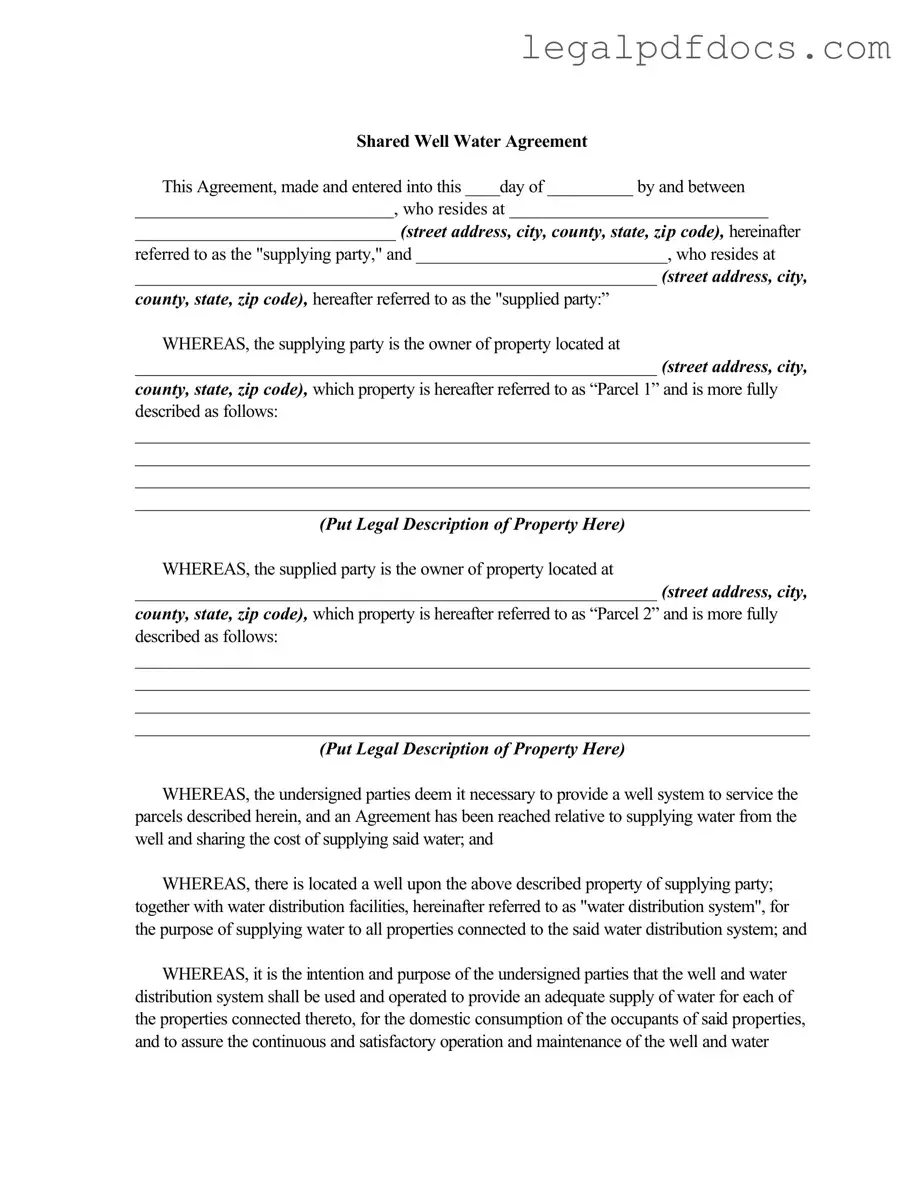Fill Out a Valid Shared Well Agreement Template
The Shared Well Agreement is a legal document that outlines the rights and responsibilities of parties sharing a well water system. This agreement ensures that both the supplying party and the supplied party have access to a reliable water source while establishing guidelines for maintenance and cost-sharing. Understanding this form is crucial for anyone involved in a shared well situation.
To take the next step, please fill out the Shared Well Agreement form by clicking the button below.
Open Shared Well Agreement Editor Here
